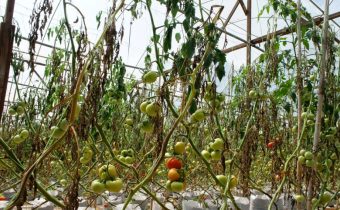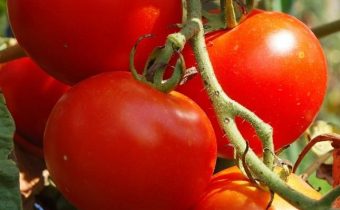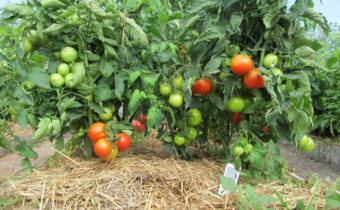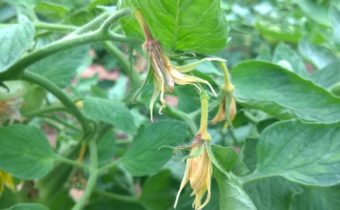How to protect tomatoes in greenhouses from overheating
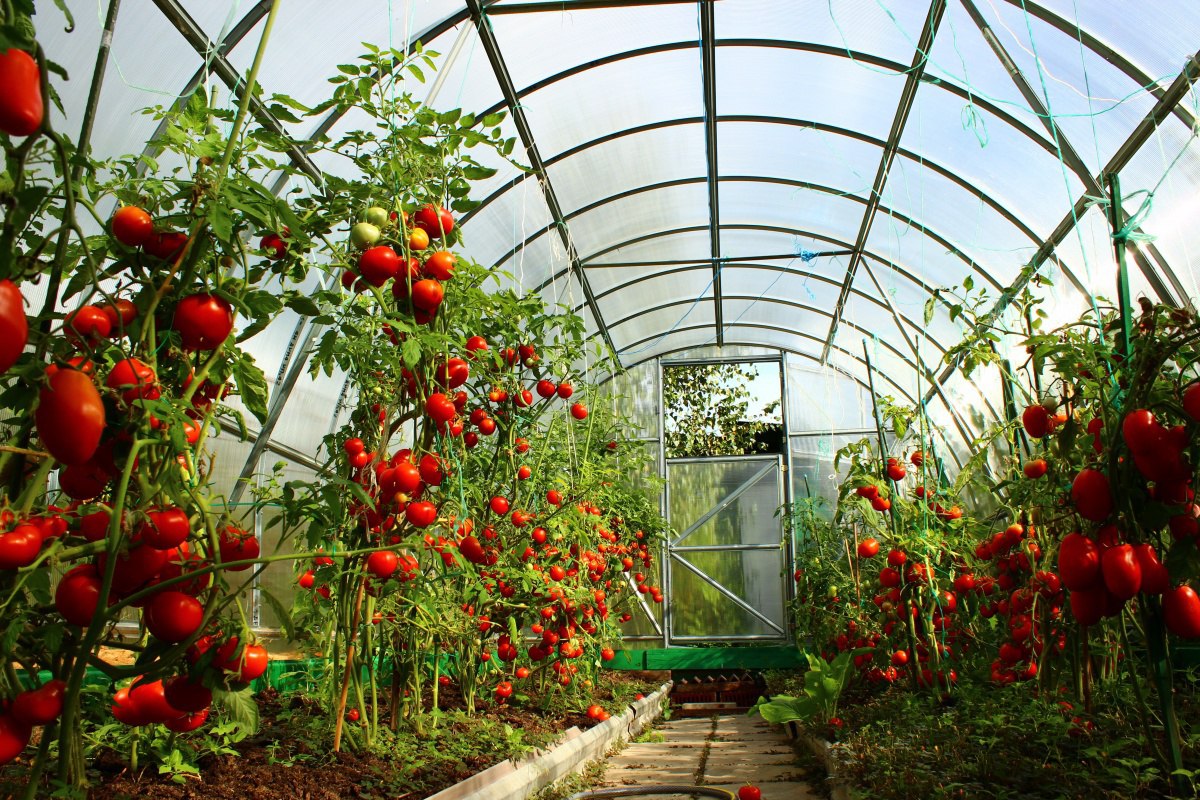
How to save tomatoes from the heat in the greenhouse - this is an urgent question for those who want to get a good harvest. Growing tomatoes in greenhouse conditions has a number of nuances. Compliance with the temperature regime is one of them.
Strong heat adversely affects the plants, so you need to do everything to protect them from overheating.
What is dangerous for tomato overheating?
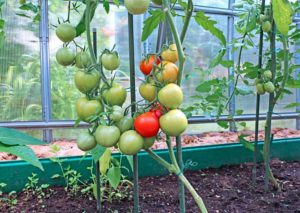
Plants react negatively to low temperatures. This is a known fact. Many, unfortunately, do not take into account that high temperature exposure has a negative effect on the growth and development of tomatoes. Overheating provokes a slowdown in the process of photosynthesis. High temperatures cause pollen to become sterile - pollination does not occur. As a consequence, the absence of the expected ovary on the tomatoes. Knowing these nuances, it is important to establish the necessary temperature regime in the greenhouse, otherwise you can forget about the harvest.
What is the optimal temperature in the greenhouse
Experienced gardeners have separate instruments for measuring the temperature of soil and air. The optimal rate for air is determined depending on the requirements of the culture. Specialists in the field of agronomy have averaged figures that are considered favorable for most plants, often planted in greenhouses:
- The air in the greenhouse for active fruiting in sunny weather should be an average of +22 degrees.
- The temperature on an overcast day can drop to + 19- + 20.
- At night, the indicator is + 15- + 16 degrees.
When the period of active fruiting begins, the average rate can be increased by 2 degrees. This applies to day and night temperature levels. In this mode, the tomatoes will grow well, ripen.
Methods for protecting greenhouse plants from overheating
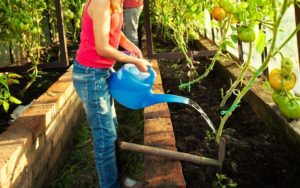
Overheating affects the growth and development of plants. This becomes noticeable after the high temperature is kept on average for 4-5 hours. Leaves wither, lose a healthy color. Further, buds, ovaries and flowers wilt and fall. Already after the leaves began to wither, measures must be taken to protect the tomatoes from overheating.
Preserve moisture
When the temperature in the environment increases, everything should be done to preserve moisture in the soil as much as possible. At the same time it is plentiful, often watering tomatoes is prohibited. A large amount of water washes away the top layer of soil, damages the root system, washes away nutrients for plant growth.
The main task is to reduce the amount of evaporated moisture. A prerequisite during the heat is soil mulching. You can use the grass that has just been mowed, pre-harvested hay. You can buy a special covering material, use thick paper.
Loosening the soil after watering helps retain moisture inside.
- Spud bushes need shallow, a maximum of 3-5 cm. It does not damage the root system, and the moisture will be maximally stored in the ground and in the air.
- Hilling helps protect the roots from possible overheating, which is important during the heat.
- Additional lateral roots are formed on the tomatoes. This will increase the amount of harvest in the future.
Greenhouse shading
Handy tools are used for shading, many are planting plants around the greenhouse or inside it, if space permits.Selected plants should not be too high - they will prevent the ingress of necessary sunlight inside. In order not to occupy the territory of a hedge, you can initially arrange a greenhouse near the appropriate size of the bushes. Trees that grow nearby, can not be called the best neighbors. They strongly shade the greenhouse, if a branch breaks off, it can damage the coating.
The hedge should not prevent the greenhouse from heating for at least 4 hours. It is better when it casts a shadow on the structure during the peak of the heat of the day.
Another shading method is to spray the greenhouse roof with a chalk solution. It dries quickly, creates shade and is easily washed off. Use for such purposes the paint is not worth it. It can not be quickly removed. Small branches are suitable for shading, just cover the roof with them, then remove.
A convenient way to save plants from overheating is using a shadow grid. It is used for large structures. The nets differ in density, letting 25% to 75% of the sunlight in them. Agrotechnologists have developed a special paint, which is allowed to cover the top of the greenhouse, it is easily washed off with water. Achievement of technical progress - light sensors. As soon as the temperature rises above the predetermined norm, they lower the sheds above the greenhouse. It is convenient, but expensive, therefore not suitable for everyone.
Air ventilation
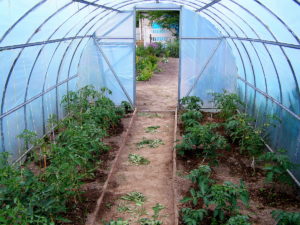
The easiest way is to regularly air the greenhouse. A simple greenhouse covered with plastic wrap should be designed with a side sash. It is enough to open it so that there is free access of oxygen. There is no risk of overheating tomatoes. In a large greenhouse, the presence of vents located at the same distance from each other is mandatory. Inside the heat should not stagnate stale air. Natural ventilation has drawbacks:
- birds and insects can fly into the window;
- airing can not always protect from exposure to direct ultraviolet rays.
In the greenhouse, you can install artificial ventilation, select hoods, put the fans. In addition, it is better to put temperature sensors as soon as it rises, ventilation will automatically turn on. These systems are convenient, but their price is not suitable for everyone. They are more often used in industrial greenhouses. For a home greenhouse, the presence of vents is sufficient.
Compliance with the temperature regime in the greenhouse is one of the main pledges for a good harvest. Tomatoes are demanding growth conditions. This should be taken into account before planting, to consider an effective ventilation system, methods of protection against overheating.



 (2 ratings, average: 3,50 from 5)
(2 ratings, average: 3,50 from 5)